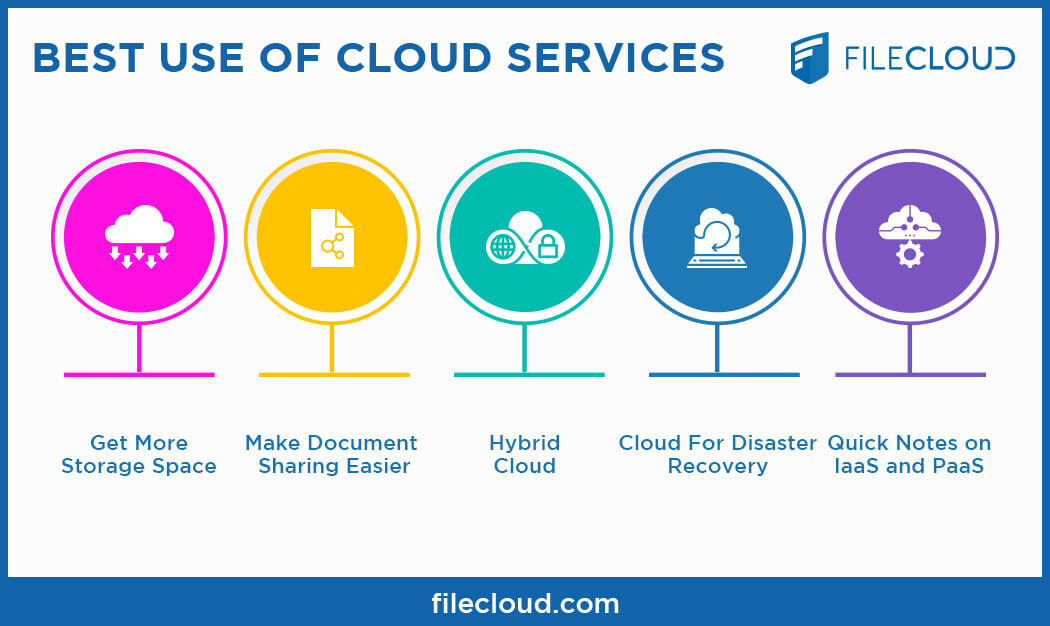Enhance Your Organization with Cloud Services: A Guide to Modern Solutions
Enhance Your Organization with Cloud Services: A Guide to Modern Solutions
Blog Article
Achieve Seamless Scalability With Cloud Services
In the ever-evolving landscape of cloud solutions, achieving smooth scalability stands as a foundation for modern services seeking to remain competitive and adaptable. The quest for smooth scalability with cloud solutions reveals a world of possibilities for those ready to welcome the transformative power of dynamic resource management.
Advantages of Cloud Scalability
Cloud scalability offers organizations the adaptability to dynamically change resources based on demand, making certain ideal performance and expense efficiency. One vital benefit is the capacity to scale resources up or down rapidly in reaction to fluctuating work. This dexterity makes it possible for services to satisfy altering customer requirements without over-provisioning sources, eventually causing cost savings. Scalability also improves efficiency by making certain that systems can deal with enhanced traffic or work without experiencing downtime or downturns. By efficiently assigning sources, organizations can maintain high degrees of performance throughout peak times without unneeded costs throughout quieter durations. In addition, cloud scalability advertises innovation and testing by permitting businesses to quickly test new ideas and range them as needed. This versatility encourages a culture of continuous improvement and adaptation, allowing organizations to remain competitive in a quickly advancing market landscape. Inevitably, the advantages of cloud scalability prolong past expense savings to include improved performance, agility, and development.
Key Attributes for Scaling
Reliable scaling in cloud services counts on vital attributes that enable organizations to readjust resources dynamically based on need. One necessary function for scaling is elasticity, permitting sources to scale up or down in action to varying workloads. This makes sure that companies can fulfill efficiency demands without over-provisioning resources. One more crucial attribute is scalability, making it possible for systems to take care of raised work by adding resources effortlessly. This attribute is vital for fitting development without endangering efficiency. Furthermore, automation plays an essential function in scaling by automating the provisioning and de-provisioning of resources based upon predefined policies. Automation lowers human intervention, enhances efficiency, and guarantees rapid response to changing needs. Surveillance and analytics tools are likewise important for scaling, supplying insights right into resource use, efficiency metrics, and prospective traffic jams. These tools enable companies to maximize and make informed decisions source allotment for effective scaling. On the whole, these vital features collectively encourage organizations to accomplish seamless scalability in cloud services.
Carrying Out Auto-Scaling Strategies
To successfully optimize resource allocation and adjust to varying work, companies must purposefully implement auto-scaling strategies in their cloud services framework. Auto-scaling allows systems to immediately adjust the number of compute sources based on real-time need. There are various auto-scaling strategies that companies can employ, such as predictive scaling, which makes use of historic information to anticipate future resource demands, and reactive scaling, which responds to present workload modifications.

Best Practices for Scalability
For organizations intending to improve their scalability in cloud solutions, implementing finest techniques is important for optimal efficiency and source administration. One secret best technique is making applications with a microservices design. This strategy breaks down applications right into smaller sized, independent solutions that can be released, upgraded, and scaled individually, enabling higher versatility and scalability.
Another essential technique is making use of containerization modern technology, such as Docker or Kubernetes. Containers enable the product packaging of applications and their dependencies into separated systems, making it simpler to scale elements separately and release them consistently throughout various atmospheres.
In addition, carrying out automated deployment and facilities as code (IaC) can simplify scalability initiatives (linkdaddy cloud services). Automation tools like Terraform or Ansible aid in provisioning and taking care of resources effectively, minimizing hand-operated errors and making it possible for fast scalability
In addition, monitoring efficiency metrics, establishing discover here alerts, and performing normal ability planning are necessary techniques to make certain positive scalability administration. By sticking to these ideal practices, organizations can achieve seamless scalability in their cloud solutions while enhancing performance and resource use.
Surveillance Performance Metrics
When examining the effectiveness of cloud services scalability, closely keeping track of efficiency metrics is vital for making certain ideal capability and source appropriation. By continuously tracking essential performance signs (KPIs) such as action times, resource, latency, and throughput usage, organizations can get valuable insights into the wellness and effectiveness of their cloud infrastructure. Keeping track of performance metrics permits the very early detection of prospective bottlenecks or issues that could affect scalability, enabling proactive procedures to be taken to resolve them prior to they intensify.

Conclusion
Finally, achieving seamless scalability with cloud solutions is crucial for companies to optimize efficiency, boost technology, and maintain high performance degrees throughout peak times. By leveraging the benefits of cloud scalability, applying auto-scaling approaches, utilizing key functions such as elasticity and automation, and adhering to ideal techniques like application style and efficiency monitoring, companies can effectively scale their systems while taking full advantage of source application and efficiency.
The pursuit for seamless scalability with cloud solutions try this site introduces a world of possibilities for those willing to welcome the transformative power of dynamic resource administration.
Cloud scalability offers organizations the adaptability to dynamically readjust sources based on need, guaranteeing optimum efficiency and price effectiveness. Another vital feature is scalability, enabling systems to manage raised workload by adding sources effortlessly.For companies intending to enhance their scalability in cloud solutions, executing best methods is critical for optimum performance and resource administration.When evaluating the effectiveness of cloud services scalability, This Site very closely keeping track of efficiency metrics is critical for guaranteeing ideal performance and resource allotment.
Report this page